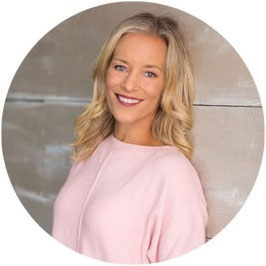Welcome to the wonderful world of a new baby. If you are here, it’s likely you are reading up while baby is kicking around in your stomach, or you have a new bundle of joy, freshly home from the hospital and you want to make sure you understand what and how to feed your sweet little one, especially when I am sure you got a lot of samples on your 9 month journey to baby being born.
First let’s start with some education about the different types of baby formula, and discuss breast milk if you can exclusively pump and bottle feed.
What are the Different Types of Baby Formula
In the world of formula, there are many options, and those options vary based on where in the world you are located. I am in Philadelphia, PA here in the States, so what we see vs. what’s available in Europe for example can very for many reasons, including things like ingredients they use or don’t use there and we do or don’t here. So, for the purposes of this, let’s start with types for formula.
Cow’s Milk-Based Formula is the most commonly used type of formula and is suitable for most babies. It’s designed to mimic the nutritional profile of breast milk, providing essential proteins, fats, and carbohydrates. These formulas are usually fortified with iron and other essential vitamins and minerals to support your baby’s growth and development. Most babies tolerate cow’s milk-based formula well, but if your baby shows signs of a cow’s milk protein allergy, such as fussiness, gas, or skin rashes, you may need to consider other options.
Soy-Based Formula is a plant-based alternative for babies who are lactose intolerant or allergic to cow’s milk protein. This type of formula uses soy protein and is also fortified with the necessary vitamins and minerals. It’s important to consult with your pediatrician before switching to soy formula, as some babies with a cow’s milk allergy might also react to soy.
Hypoallergenic Formula is designed for babies with severe allergies or intolerances to both cow’s milk and soy proteins. There are two main types of hypoallergenic formulas:
- Extensively Hydrolyzed Formula: The proteins in this formula are broken down into smaller pieces, making them less likely to cause an allergic reaction. This type of formula is suitable for most babies with food allergies.
- Amino Acid-Based Formula: This formula contains proteins in their simplest form, amino acids, and is used for babies who cannot tolerate extensively hydrolyzed formulas. It’s usually prescribed for babies with severe allergies or multiple food intolerances.
Lactose-Free Formula is designed for babies who are lactose intolerant. It uses a different carbohydrate source, such as corn syrup solids, to replace lactose. This type of formula can help alleviate symptoms of lactose intolerance, such as gas, diarrhea, and bloating.
Organic Formula is made from ingredients that are certified organic, meaning they are produced without the use of synthetic pesticides, fertilizers, or genetically modified organisms (GMOs). Many parents prefer organic formula for its perceived purity and environmental benefits. Organic formulas come in cow’s milk-based and soy-based varieties, providing options for babies with different dietary needs.
Specialized Formula is designed to address specific medical conditions or dietary needs. Some examples include:
- Preemie Formula: Formulated for premature or low birth weight babies, providing extra calories, protein, and nutrients to support rapid growth.
- Anti-Reflux Formula: Thickened with rice starch or other substances to reduce reflux and spit-up.
- Metabolic Formula: Specially formulated for babies with specific metabolic disorders, such as phenylketonuria (PKU) or maple syrup urine disease.
In addition to the different types of formula, there are also different forms it can come in:
- Ready-to-Feed Formula: This is the most convenient option, as it doesn’t require any mixing or measuring. It’s ideal for on-the-go feedings but is typically more expensive.
- Concentrated Liquid Formula: This type requires mixing with an equal amount of water. It’s less expensive than ready-to-feed formula but more convenient than powdered formula.
- Powdered Formula: The most economical option, powdered formula requires mixing with water. It has a longer shelf life and is easy to store, making it a popular choice for many families.
I always encourage my formal families in my baby sleep coaching practice to read all the labels – because sometimes there is a product, like corn in the liquid version of a formula that’s not in the powder form, and some babies can have a reaction to corn, so it’s important to pay attention to that.
How Do You Make a Baby Bottle of Formula?
Start by washing your hands thoroughly—think of it as channeling your inner surgeon. Next, make sure the bottles and nipples are sterilized. You can boil them or use a sterilizer; doing this in advance is a lifesaver at 3 AM. Once your gear is ready, measure out the necessary amount of water (we’ll get to what type of water in a bit) and pour it into the bottle.
Should I Use a Bottle Warmer or Microwave a Baby Bottle?
A bottle warmer is a small appliance designed to heat baby bottles (and sometimes baby food jars) to the perfect temperature quickly and evenly. Unlike microwaves, which can create dangerous hot spots, bottle warmers provide a gentle, consistent heat that’s safe for your little one. They come in various styles and sizes, but the basic principle is the same: warm the bottle to a baby-friendly temperature without the hassle.
There are a few different types of bottle warmers, each with its own method of heating:
- Steam-Based Warmers: These warmers use steam to heat the bottle. They are generally fast and efficient but require regular cleaning to prevent mineral buildup from the water.
- Water Bath Warmers: These use a warm water bath to gently heat the bottle. They are slower than steam warmers but provide a more even temperature, reducing the risk of hot spots.
- Portable Warmers: Ideal for travel, these warmers can be plugged into a car adapter or use a battery pack. They are convenient for warming bottles on the go.
If I Don’t Use a Warmer, Do I Need to Boil Water for Formula
The short answer is yes—boiling water is typically recommended. Boiling the water for at least one minute kills any potentially harmful bacteria, ensuring the water is safe for your baby. However, if you’re using distilled or specially purified water that’s labeled for infant use, you can skip the boiling step. Tap water, on the other hand, should always be boiled first, then cooled before mixing with the formula. It’s a small step that can make a big difference in keeping your baby healthy – which is why the bottle warmers are so popular but if you are out and about without one, bringing distilled water in your diaper bag can be clutch in an emergency.
How Many Scoops of Formula for 2 oz of Water?
When it comes to measuring formula, the rule of thumb is typically one scoop of formula per 2 ounces of water. This ensures your baby gets the right balance of nutrients. Always check the specific instructions on your formula’s packaging, as some brands might have slightly different measurements. Getting this ratio right is crucial for your baby’s health and digestion, so take your time to measure accurately.
How do I Prepare Formula Bottles in Advance?
Preparing formula bottles in advance can save your sanity, especially during those middle-of-the-night feedings. To prepare bottles ahead of time, mix the formula with boiled and cooled water as usual, then store the bottles in the refrigerator. They can be stored safely for up to 24 hours.
When your baby is ready to eat, warm the bottle by placing it in a bowl of hot water or using a bottle warmer. Avoid microwaving the bottle, as it can create hot spots that might burn your baby’s mouth. Always test the bottle from the warmer or a bowl of boiled water to make sure it’s not too hot. I recommend a little test on the inside of your wrist, where you are sensitive and can ensure the temperature is right.
How Long Can Breast Milk and Formula Be Out?
- Room Temperature: For breast milk, if the room temperature is higher than 77°F/25°C, the storage time is shorter. For formula, it should be discarded after 2 hours at room temperature.
- Refrigeration: Breast milk can be stored in the refrigerator for up to 4 days, while formula should be used within 24 hours.
- Freezing: Breast milk can be stored in a freezer for up to 6 months for best quality, though it can remain safe for up to 12 months. Formula should not be frozen.
- After Feeding: Once feeding has begun, both breast milk and formula should be used within 2 hours. Any leftovers should be discarded to avoid the risk of bacterial contamination.
Now that you are prepared for the intake, let’s prepare you to maximize sleep. I welcome you to listen to our free sleep training video, jam-packed with 45 minutes of education, to help you build healthy sleep habits from the start. You can click here and start listening.
As one of the most experienced & award winning baby, toddler and adult sleep coaching agencies, Tiny Transitions has been transforming sleep in families of all shapes and sizes for almost a decade. With an experienced and diverse team of sleep consultants, we work with families through their sleep struggles with tiered offerings to meet every age, stage and budget – all while supporting your little one on their unique path to a tear-free bedtime, sleeping through the night, waking rested and refreshed.
Courtney Zentz, our Founder is on a mission to change the way the world views sleep, one family at a time. At Tiny Transitions, you come for sleep, but you stay for the community & give your child the gift of sleep.
Our Sleep Consulting Services Include:
All-Inclusive $47/month Sleep Steps Membership
Mini Sleep Coaching Sessions with a Baby or Toddler Sleep Coach
Private Infant & Toddler Sleep Coaching Services
Retainer / Concierge Sleep Coaching Packages – Price Upon Request
Are you Googling Sleep Coach Near Me? Don’t stress. We offer in-home sleep coaching in the following cities and virtually around the world.
- Philadelphia, PA
- Blue Bell, PA
- Dallas, TX
- Austin, TX
- St. Louis, MO
- Huntsville, AL
- Caldwell, NJ


